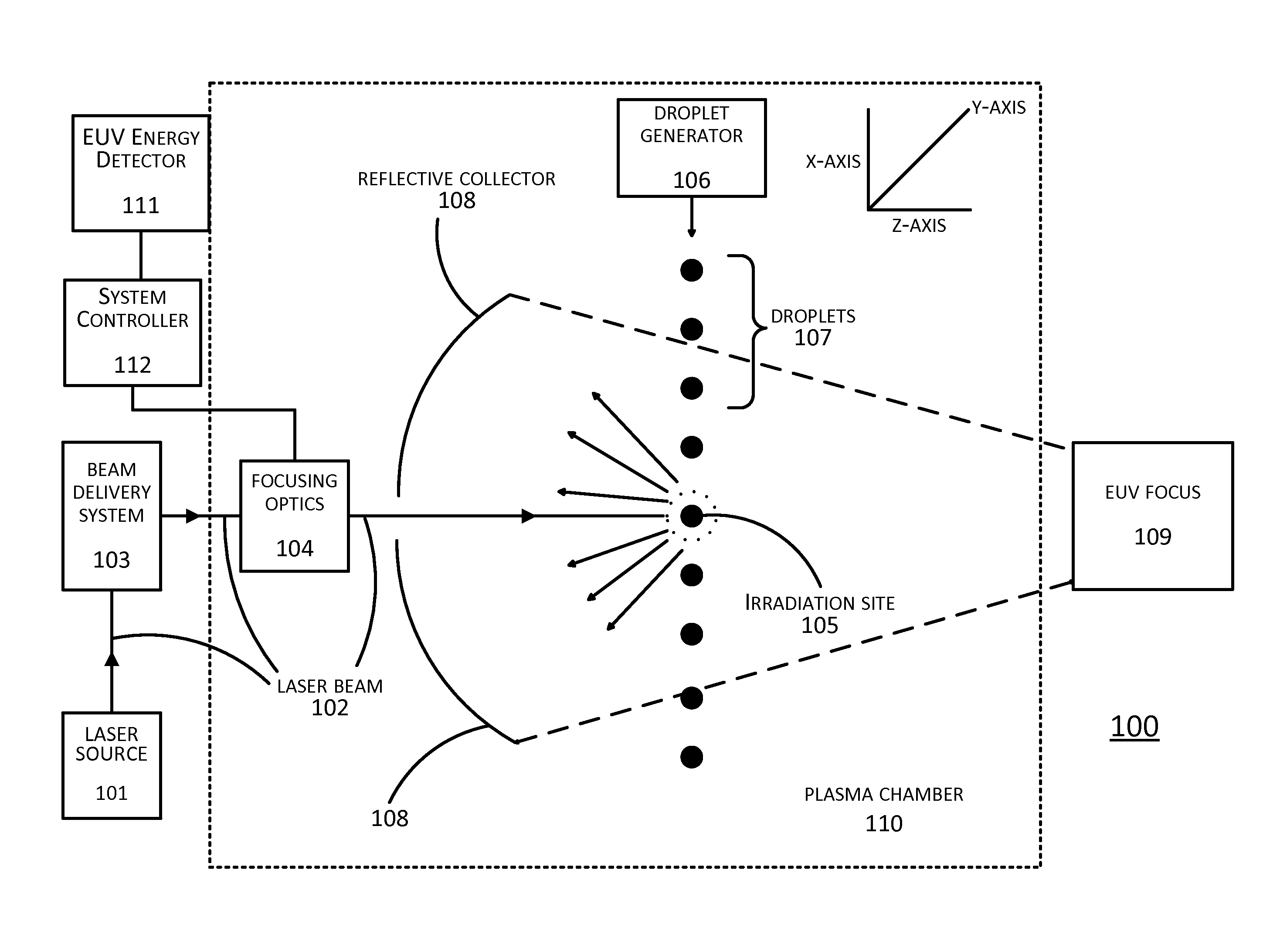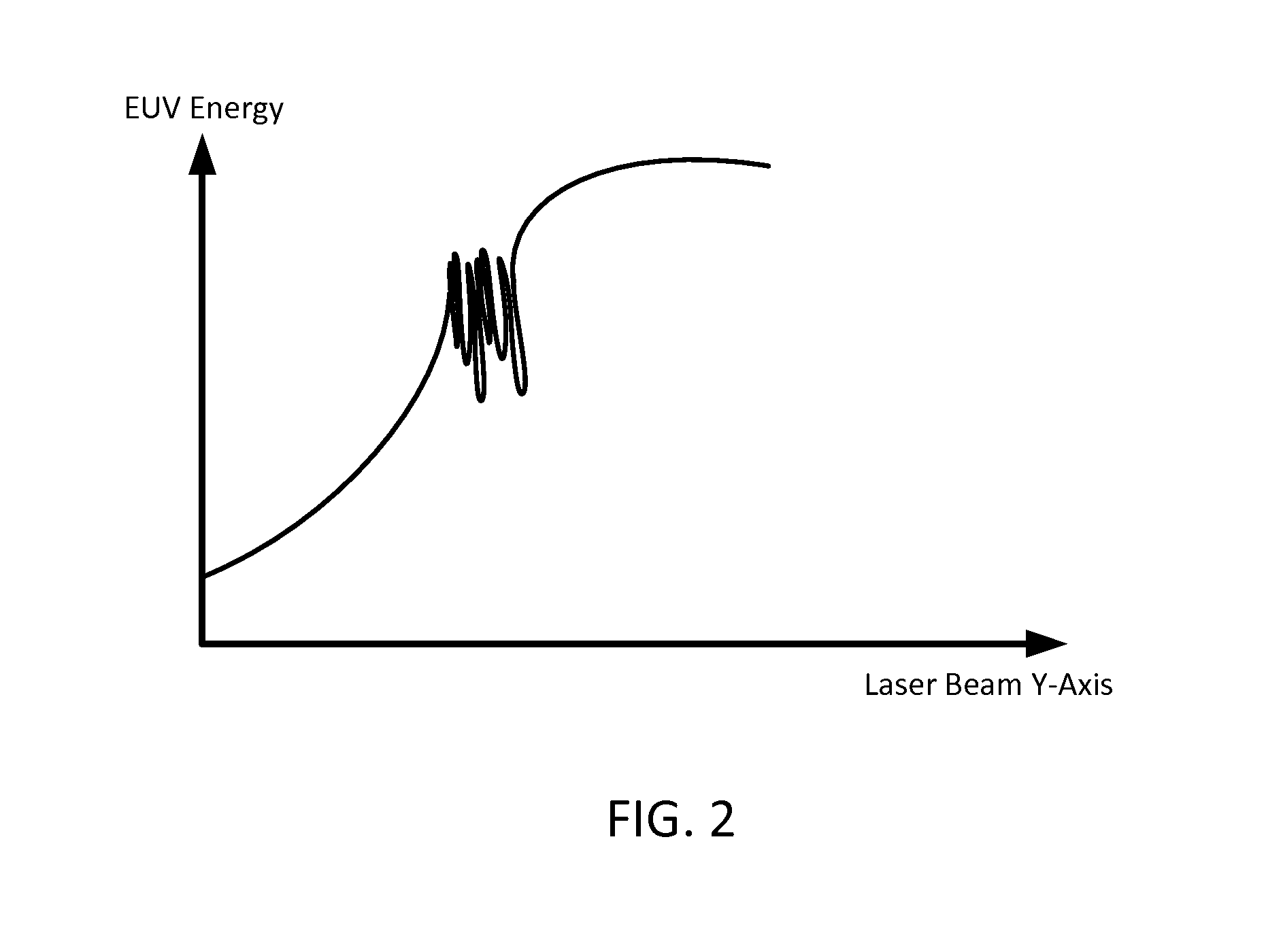Systems and methods to avoid instability conditions in a source plasma chamber
a plasma chamber and instability technology, applied in the field of laser systems, can solve the problems of laser beam slowly drifting into a region of such oscillation, undesirable variations in wafer euv light exposure,
- Summary
- Abstract
- Description
- Claims
- Application Information
AI Technical Summary
Benefits of technology
Problems solved by technology
Method used
Image
Examples
Embodiment Construction
[0024]In LPP EUV systems, the amount of EUV energy generated is maximized when a droplet arrives at a primary focus point at the same time as a pulse of a laser beam. Conversely, when the droplet and laser beam do not both arrive at the primary focus point at the same time, the droplet is not completely irradiated by the laser beam. When that occurs, the laser beam, instead of squarely hitting the droplet, may only hit a portion of the droplet or miss the droplet entirely. This results in a lower-than-expected level of EUV energy being generated from the droplet. Repeated instances of this can appear as oscillations or instabilities in the resulting EUV energy level. Similarly, other factors such as laser beam focusing drift caused drifting of the focusing optics of the LPP EUV system can likewise cause instabilities in the level of generated EUV energy.
[0025]Prior approaches to dealing with these problems have been directed towards stabilizing the oscillations, with mixed results. ...
PUM
 Login to View More
Login to View More Abstract
Description
Claims
Application Information
 Login to View More
Login to View More - R&D
- Intellectual Property
- Life Sciences
- Materials
- Tech Scout
- Unparalleled Data Quality
- Higher Quality Content
- 60% Fewer Hallucinations
Browse by: Latest US Patents, China's latest patents, Technical Efficacy Thesaurus, Application Domain, Technology Topic, Popular Technical Reports.
© 2025 PatSnap. All rights reserved.Legal|Privacy policy|Modern Slavery Act Transparency Statement|Sitemap|About US| Contact US: help@patsnap.com



